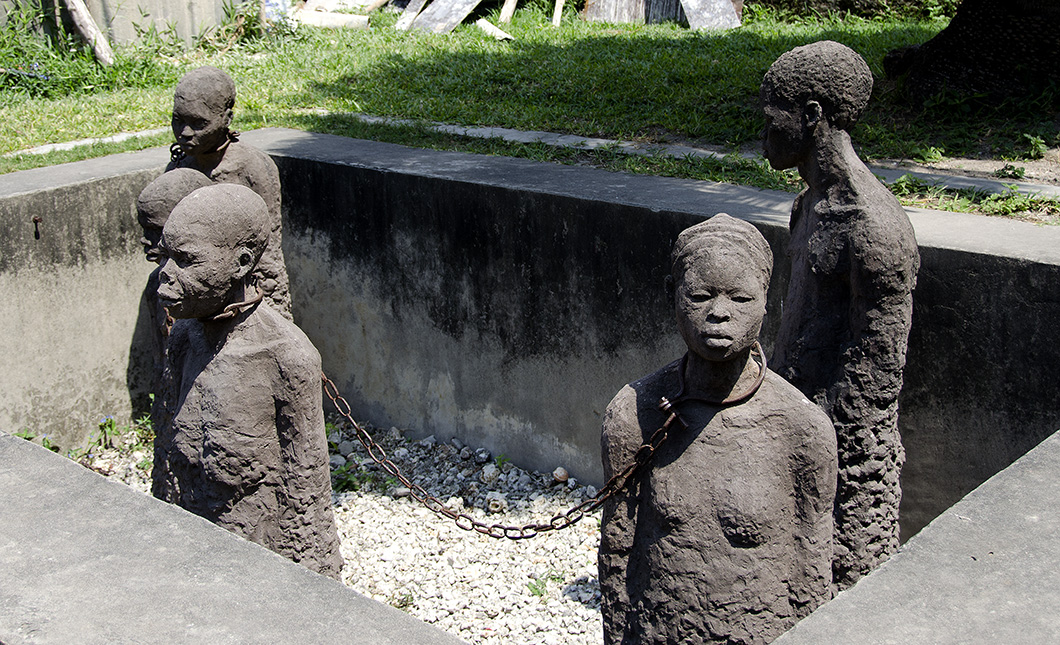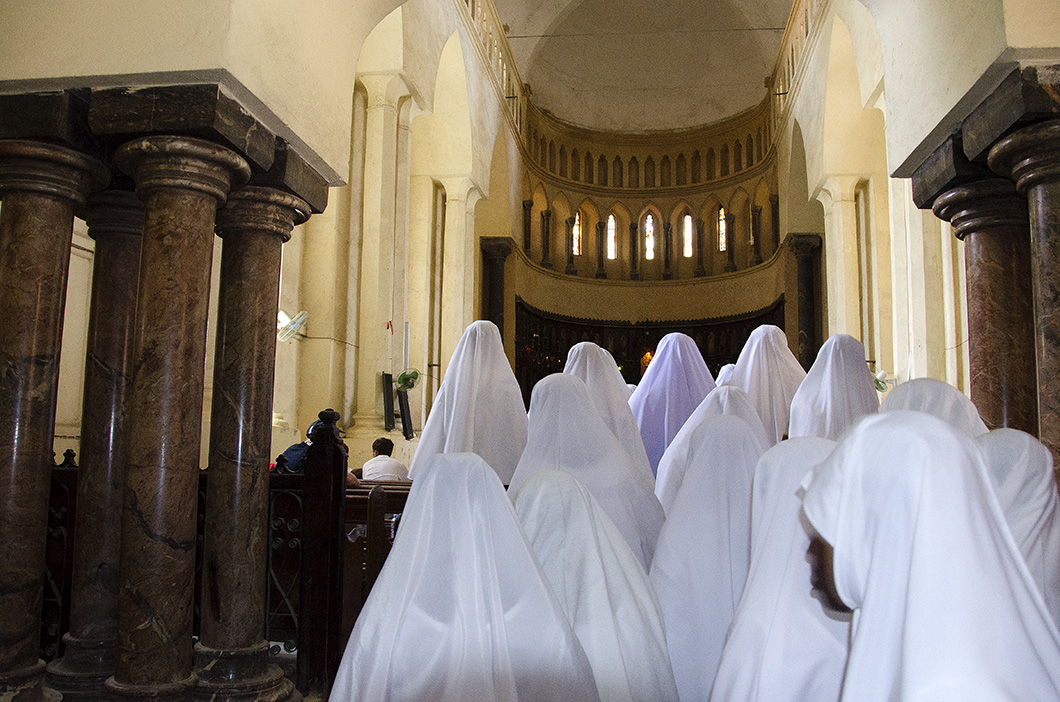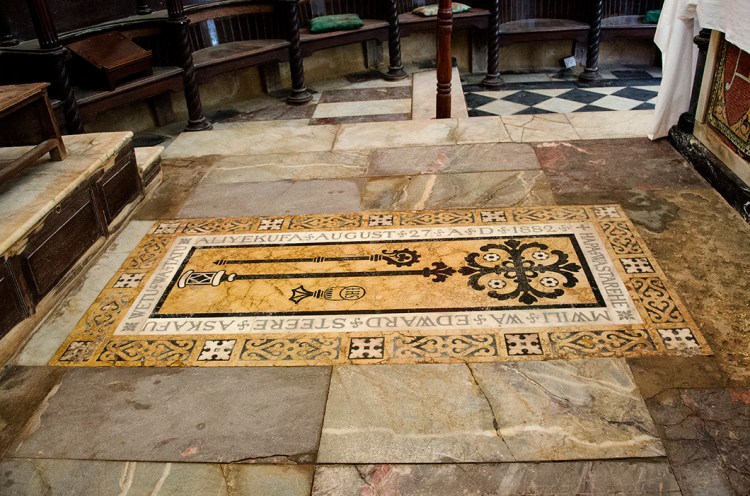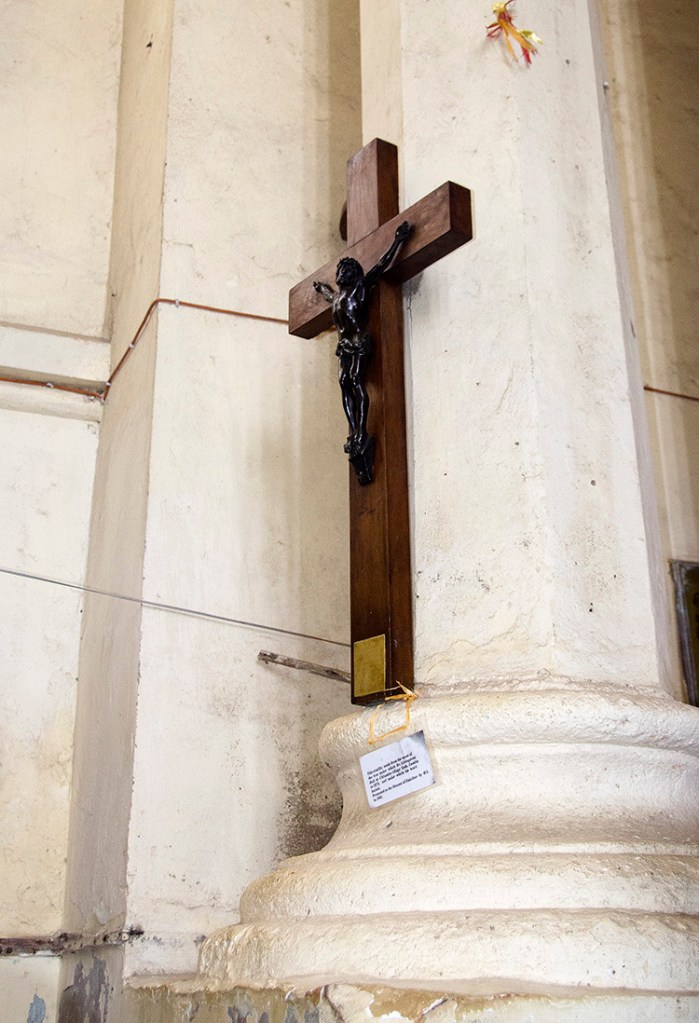The allure of Zanzibar, its multicultural, decaying opulence harking back to an affluent past, is derived from its history of thriving commerce in the Indian ocean. It is sobering to consider, however, that the affluence was fuelled as much by trade in ivory and slaves as in benign commodities like spices and silk.
As is the fact that it was the last place on earth where human beings were bought and sold like cattle nearly half a century after the practice was banned in the rest of the world and on the West coast of Africa.

Traders from every resident ethnicity profited from the slave trade, with the tacit connivance of Indian authorities (under the aegis of the East India Company) which held jurisdiction over Zanzibar at the time. Even while back home, British citizens influenced by the horrific accounts of evangelist missionaries, mounted pressure on their government to crack down on the Sultan.
It was a Scottish doctor and botanist John Kirk, one of Dr. David Livingstone’s companions on his earliest expeditions, who initiated the slow process to end slavery for good. His rise from lowly functionary to British Consul of Zanzibar, his patient collating of data against the trade, his use of trickery, persuasion and force to influence the Sultan and Arab traders (and his bosses), and his final and single handed pursuit of slavers on the island as well as on the mainland, is an inspiring story that is strangely less talked about than the lesser pursuits of his more famous, and missionary, compatriot! I for one had never heard of him before.
Today, the Anglican Cathedral Christ Church occupies the site of the infamous market, with its high altar positioned over the spot where the slave whipping post once stood. A cross to the right of the altar is said to have been carved out of wood from the mpundu tree from Ilala in Zambia, under which Dr. Livingstone’s heart was interred by his two loyal attendants.
The cramped, claustrophobic dungeons where hundreds of slaves were held for days – perhaps months – under appalling conditions, are accessed through the museum next door. Outside, five bronze sculptures in a concrete pit, fettered together with chains from the original market, recreate the scene of a human auction. A powerful monument to the memory and inhumanity of a dark past.
The ending of slavery marked the beginning of the downward spiral of Zanzibar. And ironically, opened the doors for the mad ‘scramble for Africa‘ by imperialist powers.
ENJOYED THIS? CHECK OUT MORE STORIES FROM ZANZIBAR






hi thanks for prevent the history
Slavery in modern times, is alive & kicking in India. It is just delicately termed,”Bonded Labour!” Very moving pictorial post, Madhu…….
The glimpse of lives that were probably worse than death gave me goosebumps. It was wonderful to see this side of the story through your eyes. Thank you for sharing 🙂
This reminds me of my very sobering visit to the slave “castles” in Ghana. I know very little about Zanzibar in spite of my time in nearby Tanzania, and your post was wonderfully informative. Thanks!
What an ugly, brutal history.
So much sad history the world over, Madhu. You don’t have to look far today.
An important reminder to all about a sad, embarrassing part of human history.
Nice read. I like the video format you have introduced, Madhu.
Perhaps you could include a note on Dr Livingstone, as he springs up from nowhere in the essay?
Much love.
I can imagine the chilling air over there, the goosebumps! Still an invigorating experience I am sure
a heartbreaking story
This was a fascinating post Madhu. I’ve been to Bagamoyo, on the east coast of Tanzania. It was here that the slaves, after having rounded up from the whole eastern region of Africa, were gathered to be shipped first to Zanzibar and then to the rest of the world. Zanzibar has held a fascination for e ever since.
I’m glad that slavery has ended, but unfortunately what has not ended is man’s cruelty to man. We just see it in other forms, or it has gone underground. It breaks my heart.
Alison
Dear Madhu, the sculpture of the chained salves in the pit is very moving. I’m afraid there are places today where people–particularly women–are still bought and sold like cattle, married off as children against their will, or kept as prisoners in their own homes, here in the United States and elsewhere. The world has come a long way, but we still have far to go. Thank you for speaking out.
This is such a moving post Madhu, one that made me want to weep.
Very well done Madhu!!! We need to remember that this was not so far along…It is incredible !!!
Thanks for sharing this sobering post. Man’s inhumanity to man never ceases to amaze me. I hope to visit Zanzibar someday.
Very nicely done, Madhu. Slavery—such an ancient concept. Such an inhumane human concept. I understand why people did it, I just don’t understand how they could.
Also…I’ve been wanting to get to Zanzibar for decades now. And was thinking of this summer! Are you there now?
A fascinating island. If you read Rodney’s account in How Europe Underdeveloped Africa, he sites a different reason for the slave trade being stopped.
Thinking about the slaves in Zanzibar and the horrific conditions they endured made me feel as though I were suffocating. Their story needs to be retold again and again. Thank you for telling it, Madhu.
That was so interesting. I love these little snippets of history you share with us.
Im hoping we humans have learned a thing or two since this and we treat each other as equals and understand the value each human has on this earth.
So intense but beautifully written, Madhu! The part about John Kirk gave me good chills repeatedly as I read. 🙂
“Memory of the slaves” is such a devastating and haunting piece of artwork. Thanks for this post.
I went to the site of a slave market and to the ‘Door of no return’ in Ghana, desperately sad places that show the appalling history of the way so called humans treated others.
The museum was closed when we were there. Without John Kirk’s pressure to bring this insidious practice to an end, no telling how long it would have continued. I remember how moved I felt when I saw the pit with the slaves. Zanzibar’s dark past.
Reblogged this on It Is What It Is and commented:
History …. not at its best!
No, not at all. And in every such instance it is the people who watched and kept silent that are the equally culpable.
Unimaginable what these people must have been through. Thanks for sharing this story, people shouldn’t forget.
True. And the museum’s main aim is to keep the memory of the inhumanity alive.
That is a different angle to Zanzibar, which always conjures up images of an exotic peaceful land. Glad that it was half a century ago.
Yes, Niranjan. Every place has its skeletons.
Thanks for sharing, it is sad and sick to know what human beings do to other human beings and in some way or the other such activities, slavery in different forms, continue.
Of course it does. Only the terminology has changed to human trafficking.
We have been inside the underground cells where slaves were kept in Zanzibar before they were shipped out. I think everyone who has stood in that space could feel the misery and despair of the poor wretches who passed through there.
True Debra. It is all the more incomprehensible to me how those who put them there could have been impervious to it.